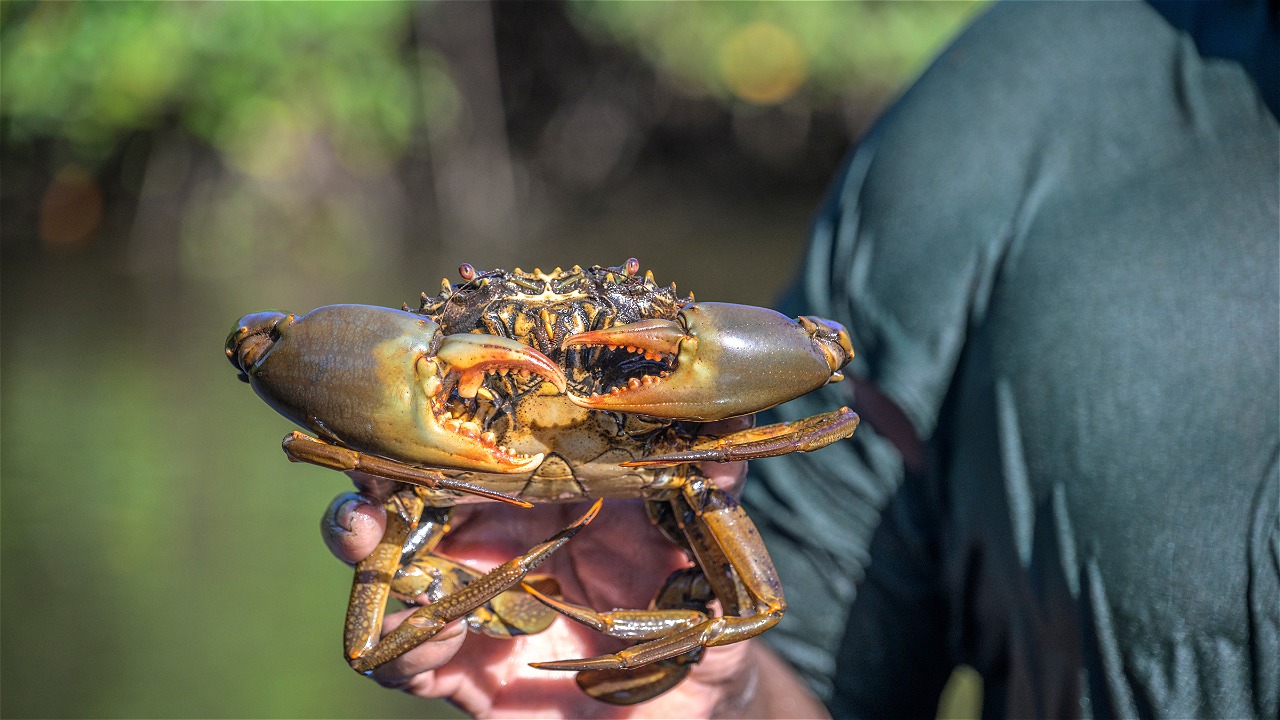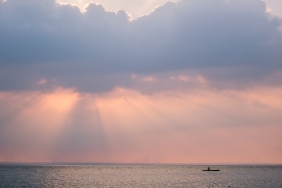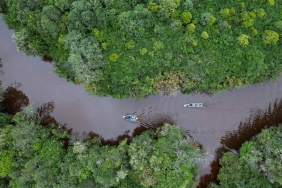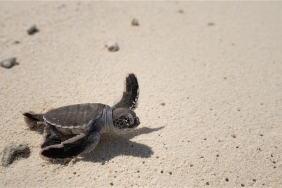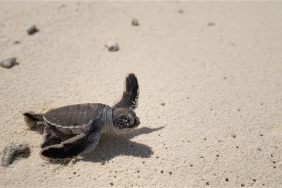TRACING THE HISTORY OF MANGROVE CRAB FISHING TRENDS IN BUNAKEN NATIONAL PARK
By: Faridz R. Fachri (Capture Fisheries Officer, WWF-Indonesia)
"In the past, I could catch up to 25 crabs in one fishing trip. But now, just 6 crabs is the most. The size has also shrunk, averaging 500-700 grams, which should be above 1.5 kg."
This testimony was delivered by Mr. William, who has been a mangrove crab catcher for more than 15 years in Pinasungkulan Village, Minahasa Regency, North Sulawesi. The village is located within Bunaken National Park (TN), a nature protection area dominated by 97% marine waters. The remaining 3% is land which includes five main islands; Manado Tua, Bunaken, Mantehage, Naen, and Siladen Islands.
You can imagine, the uniqueness of the underwater world of this national park that is right in the heart of the Coral Triangle in line with the Ring of Fire. But let's put aside the thought of diving there for a moment. There is another tropical ecosystem that stands out in Bunaken National Park, which is the mangrove ecosystem. No kidding, it reaches 960 hectares.
In Wawontulap, South Minahasa, for example, the mangrove forest is dominated by Rizhopora sp with good density, and tree height reaches 30 meters. This massive estuary ecosystem is of course inseparable from the utilization of mangrove crab fishing, which is classified as prestige-seafood.
The story told by Mr. William became an important finding when WWF-Indonesia and Forum Masyarakat Peduli Taman Nasional Bunaken (FMPTNB) traced the history of mangrove crab fishing in Bunaken National Park last January 11-19, 2017.
Since 2013, WWF - Indonesia and FMPTNB have started a fisheries improvement program (FIP). This search was conducted to fulfill information on the utilization pattern of mangrove crabs, using the historical catch method.
We explored the location of fishing centers on the south side of Bunaken National Park, Mantehage Island, and Bunaken Island. We started this exploration by analyzing the utilization of mangrove crabs in the southern area of Bunaken NP, namely South Minahasa (Poapreng Village) and Minahasa (Pinasungkulan Village) districts.
Traveling from Manado to the target location takes 2.5 hours with quite difficult terrain. The geographical condition of the Ring of Fire line is characterized by many cliffs and mountains, which required us to endure nausea during the trip. However, we were entertained by the beautiful landscape of the Celebes Sea to the north.
Different conditions were encountered when making observations on Mantehage Island. We had to travel by sea by boat. The open waters of the Celebes Sea sometimes triggered high waves, especially when strong winds signaled the transition to the western season. Through various terrains, the team finally managed to collect data on mangrove crab fishing in Bunaken National Park.
Mangrove crab fishing activities began in the 1990s, dominated by the species Scylla serrata and Scylla olivacea. Initially, in addition to the handpicking technique with kate-kate (hook) tools, not a few fishermen dived (mundung) to catch mangrove crabs.
How great, diving during high tide to catch crabs in the estuary area with brownish water conditions. However, starting in 2011, some fishermen switched to using bubu traps, especially in the area of Popareng Village and Bango Village on Mantehage Island.
There is no doubt that, roughly speaking, there are indications of a decline in the crab population in Bunaken National Park, both in terms of productivity and size. In fact, when viewed from the trend of the number of fleets and fishermen operating, the change is not too significant. However, indications of the increasingly distant fishing location to the Toli-Toli area are enough to show a decline in mangrove crab stocks in nature.
More conclusive results will be seen from the analysis of Harvest Control Rules (HCR) based on the historical catch. This data will be used as the basis for developing a Fisheries Management Plan (FMP) for mud crabs in Bunaken NP.
These results will be socialized to all stakeholders through a Focus Group Discussion (FGD) to obtain input and future action plans. With indications of a decline in mangrove crab stocks, there should be management efforts towards sustainable resources in this national park that is the pride of Minahasa. Nature preserved, stomachs no longer singing!

